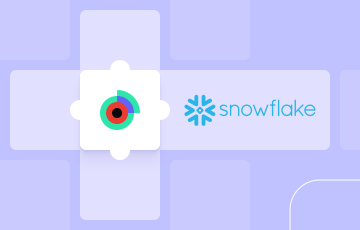
4 reasons you should use weather based personalization
The weather, more than just a watercooler conversation topic, has a real impact on several aspects of our lives. One look out the windows influences how we dress, what we do, how we feel and what/where/when we buy..
"Weather-based personalization" applied to conversion rate optimization is the creation of promotional, personalized content or messages (mail, pop-in, landing page…) depending on the weather at your visitor's location. It gives you another opportunity to present the right product, to the right visitor, at the right time.
As a standalone or coupled with other segmentation and personalizations actions, it's a guaranteed way to gain a competitive advantage, relevance and increase your average cart amount. This type of contextual personalization is but one of the many ways marketers can use to build trust with their visitors and craft personalized experiences.
In this article we'll give 4 reasons you should be using the weather to boost your conversions.
Reason n°1: you don't need visitors' data
You can segment and personalize your website depending on numerous attributes: behavioral, traffic origin, contextual or device used for example. If we recommend you invest fully in segmenting your visitors and clients, you can still decide to create personalization actions (targeted offers, messages and content) for your anonymous visitors without having to integrate with your existing information systems.
For weather-based personalization, you can use weather data from their geographical position, through the IP address and/or data already stored.
For example, a clothes retailer can push offers on warm clothes to people under codld weather, or an umbrella for people living in England (ha). It could, through dynamic inline content on the homepage; via email; with pop-ins…
Nevertheless, the impact of weather-based personalization is more effective when it's combined with a deep research of visitors' segments. How? By combining the data you already have on your visitors/customers in other tools and the data you collect as you go through web analytics.
You can pull data from:
- your Tag Management System: data collection center of your website, your TMS distrutes visitors' data to your ecosystem. It allows you to unify your data and empower your personalization solution thanks to a more precise segmentation.
- your Data Management Platform: although not an obligation, the combination of a web personalization solution with a DMP can further your customer knowledge thus improving the effectiveness of your personalization actions.
- your Customer Relationship Management solution: data from CRM is extremely valuable and companies historically already have a lot to work with, though not able to take full advantage of it. But now, personalization solutions. For example, you could like weather data with the purchase history, for hyper-relevant product suggestions.
Reason n°2: you increase your relevance
Like with geolocation (which we talked about earlier), this type of personalization action gives your visitors the feeling they're at the right place. By following the mood and purchase intensity of your visitors related to the weather, you build trust and a durable relationship with them.
Still in clothes retail, you can use the weather to create more impactful campaigns: who wants to buy a bikini when it's raining outside? Show clothes relevant to the weather is more relevant in most cases, and that's what Sportsmaster successfully did with its Russian customers. Read more here.

Be careful not to use the same type of personalization action every time (a particular location on the page, pop-ins, banners, etc...). Your visitors will get either annoyed or will subconsciously train themselves to ignore it (like they did for ads).
Think about using personalization actions relevant to YOUR business. Maybe, if your visitors don't come back frequently—if you sell furniture, for example, you should send an email triggered by the weather instead of changing the background of your website. There are no definitive answers here, but always consider your strategy as a whole and do what would have the most impact on your bottom line.
Reason n°3: you use all the resources at your disposal
Aside from the relevance, a segmentation of your audience with weather data will allow you to use a greater range of products, increase your average cart size, but also to dispose of your stock.
The tire retailers are particularly dependent of the weather—with winter tires for example. It's a special market where "frequent" buyers only convert twice a year. The challenge here is to show your visitor you have what he's looking for AND to show him products he wouldn't think about on his own. Weather-based personalization is a great way to do this.
For example, as soon as the temperature reach a certain level, you can:
- trigger a pop-in for new visitors,
- show recommendation blocks for winter tires and related accessories.
Warning: you need to prioritize your personalization actions.
Your visitors will most likely be targeted with several personalization actions. But you don't want to harass them to the point where they'd leave, do you. So, how do you prioritize them? For each action you'll need to consider the following 3 criteria:- Potential improvement: how big is your margin of improvement is at this particular stage in your conversion funnel?
- Impact: how much of an impact would this action have on your bottom line/conversion rate?
- Segment: which segment of your audience does this action target? Is this segment more, or less important for your business goals?
Once you've answered these questions, you'll have a ranked list of your personalization actions. Then, from your tool attribute a priority score to each action, that way, in case a visitor is in several segments and would be subject to several actions, only the ones with the highest score will be shown to him.
Reason n°4: you strengthen your brand
By using the weather, you contribute to creating an emotional proximity with your visitors, and you show your willingness to go one step further for them.
For example, if you were working for an insurance company, you could show information relevant in case of bad weather, via email or SMS, depending on where your customers live. This double segmentation would definitely improve your brand value in their eyes.
Weather-based personalization will show your understanding of your visitors needs and context, but also the proof of your ability to answer them. Your visitors will find what they came looking for but also what they didn't think they needed. Even used alone, it will improve your website relevance in the minds of your visitors. Coupled with other visitors and contextual data, it will contribute to creating a truly personalized experience.

